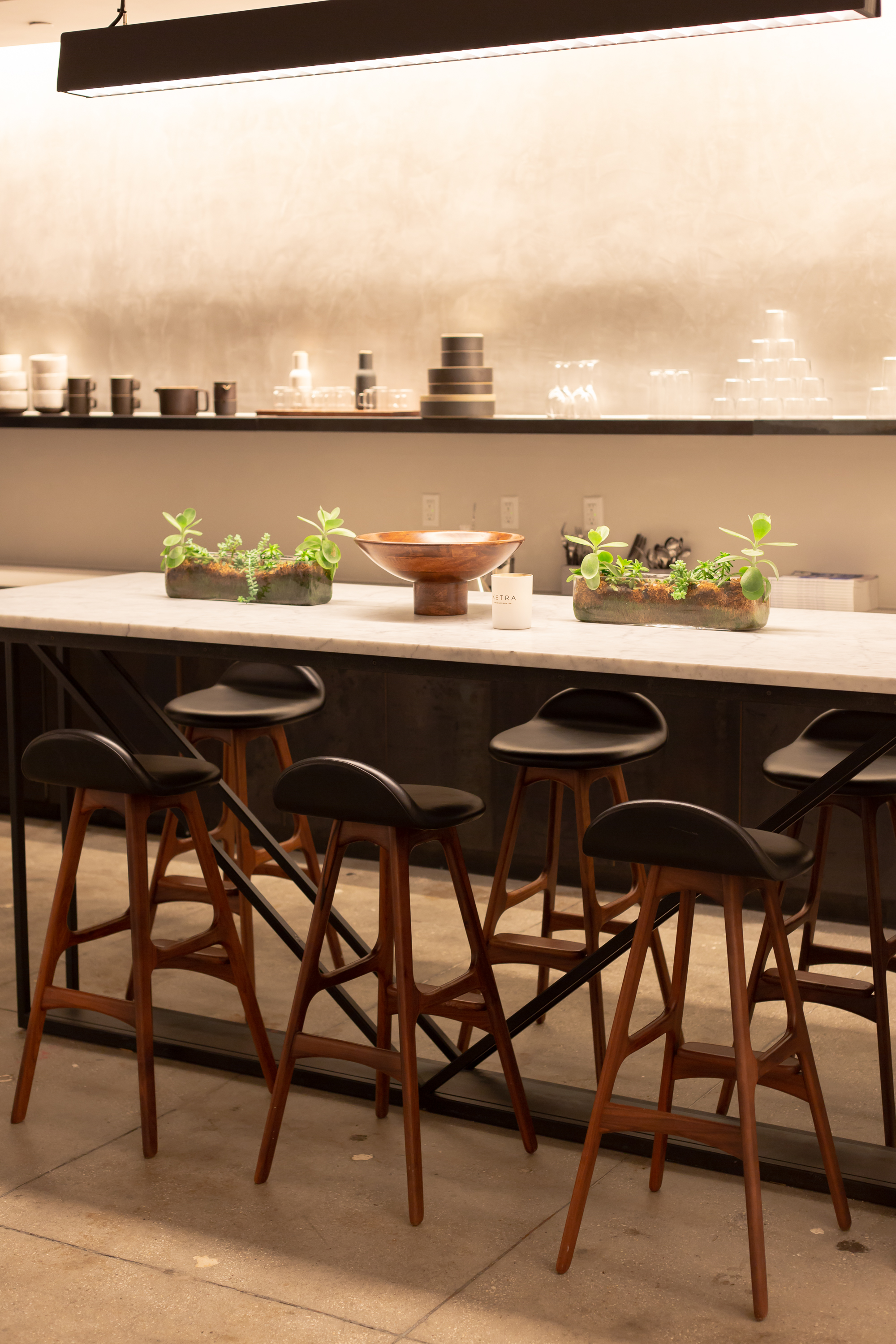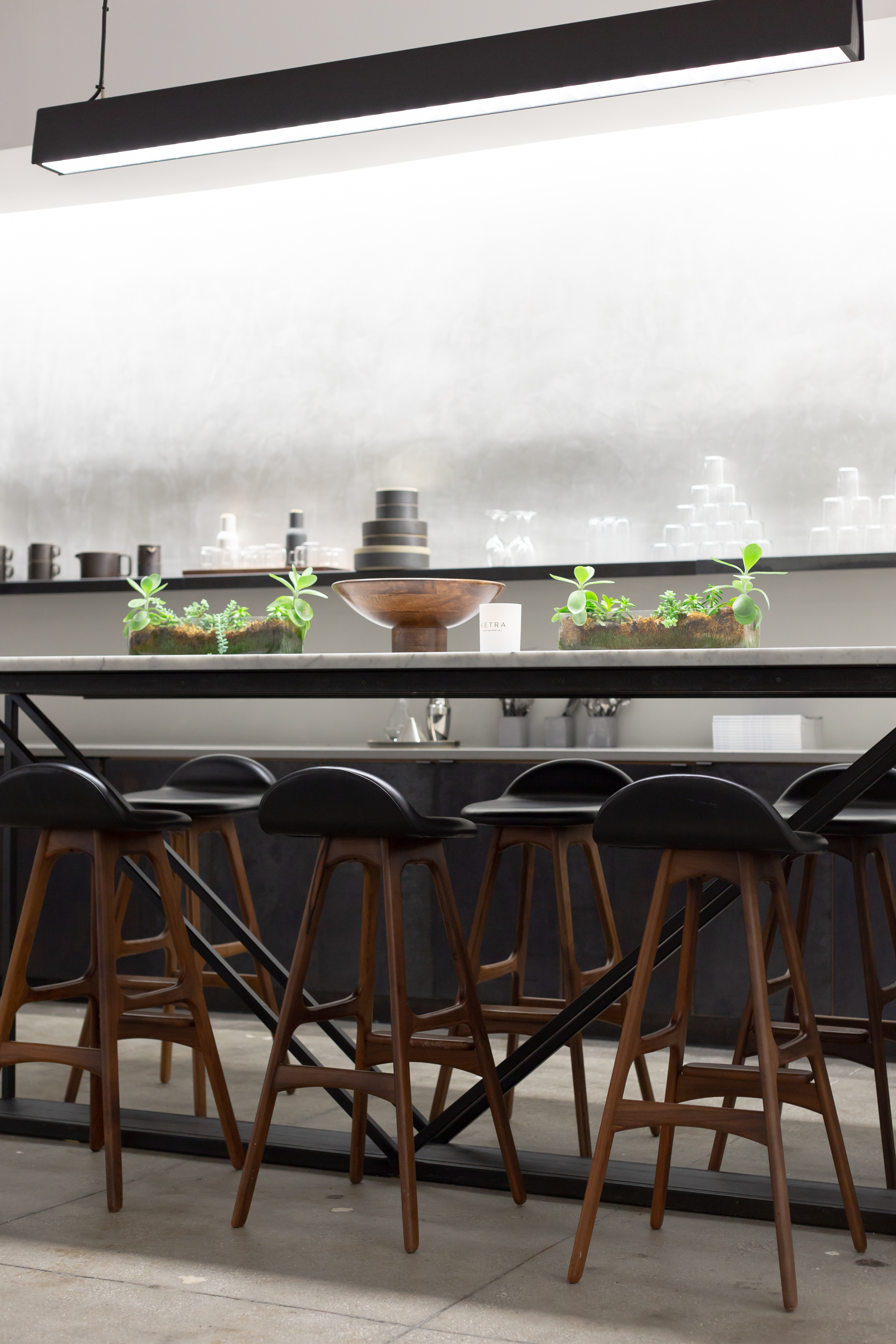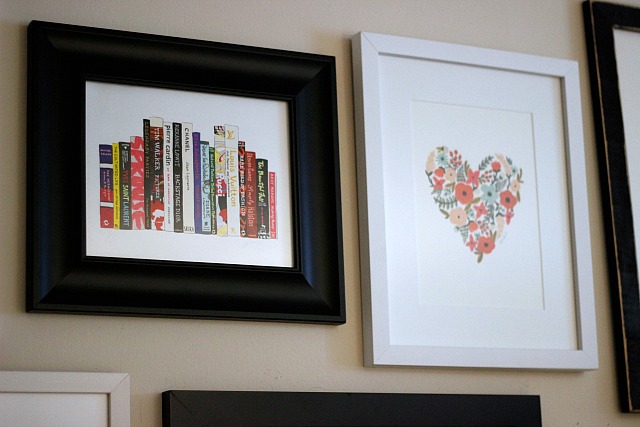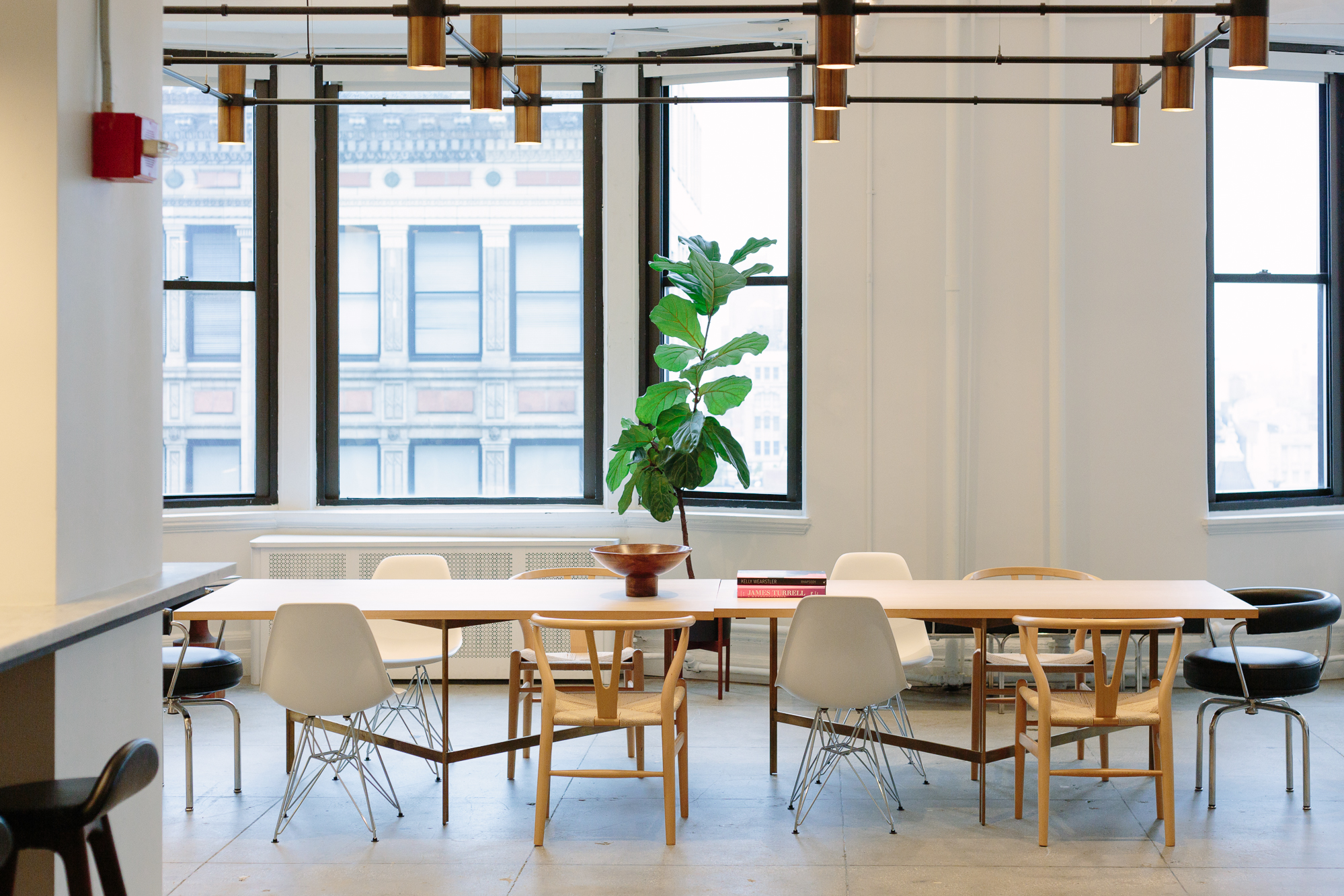
When Ketra recently reached out to me about partnering up to highlight their Natural Light system on the blog, I was intrigued. Like most creative people, I’m pretty obsessed with natural light (there’s nothing better for photos), so when they told me they had a smart, premium lighting system that automatically shifts throughout the day to perfectly mimic sunlight, I was excited to visit their studio and check it out in person!
The basic gist is that you get the Ketra lighting system installed in your home by a home automation professional, and then the lights in your space will subtly change throughout the day in both temperature and intensity. During the day you get crisp, bright light that makes your space feel flooded with sunlight. Throughout the day the lights slowly change (like the sun), so that by the time evening rolls around the lights in your home have become warm and soft, like the golden hour glow of the setting sun. It’s a flexible and advanced lighting solution that integrates seamlessly into your home and essentially mimics natural light.
Here’s an example:

This is the Ketra studio which I photographed during the day. The sunlight outside is nice and crisp and clean, and the Ketra lighting system is set to match.
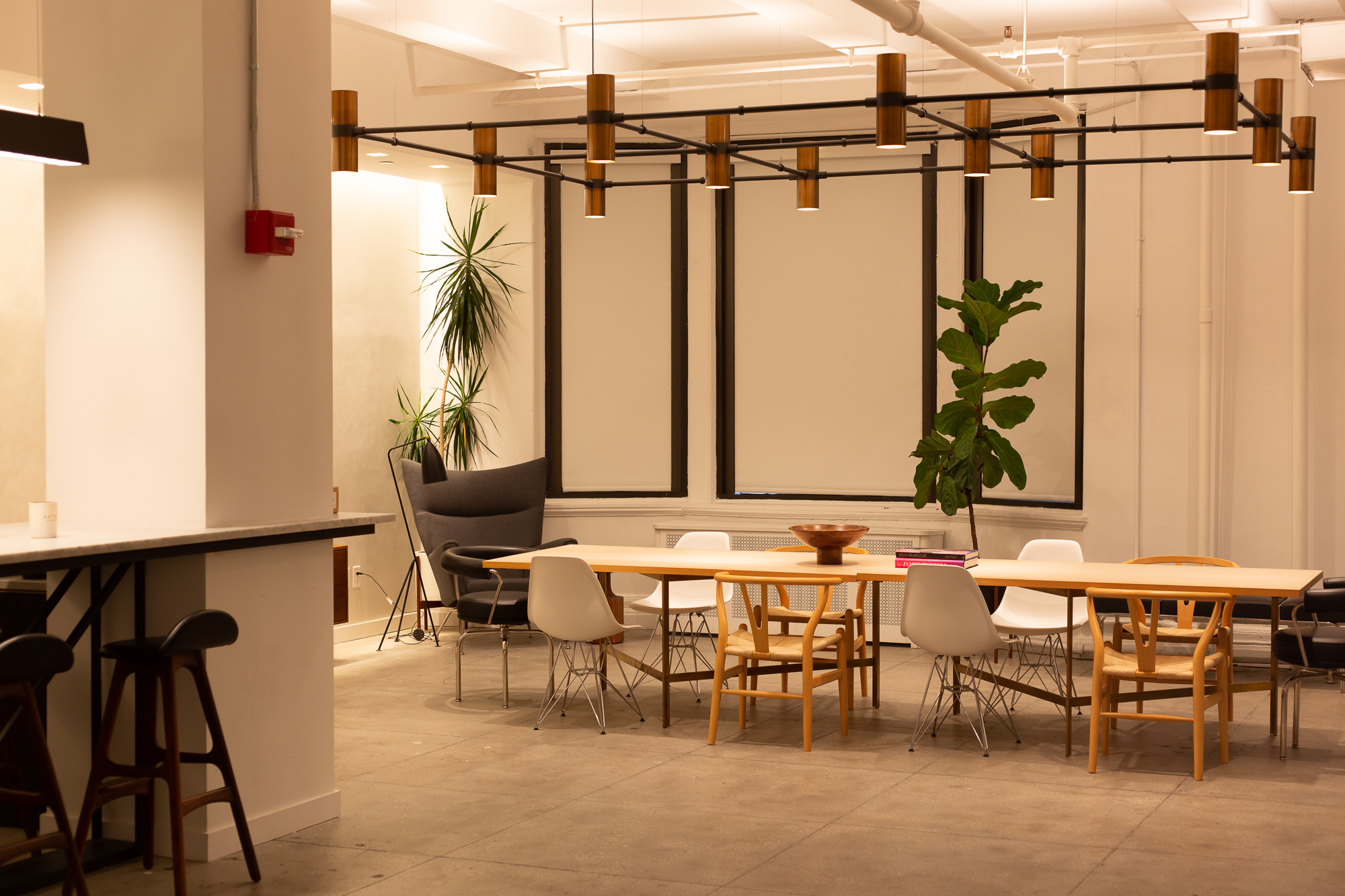
Now you can see what the Ketra system would look like in the evening. The lights are softer, much warmer, and you can almost picture the sun outside setting over the horizon and casting a cozy glow into the room. Wouldn’t that be just the perfect thing to set the mood for an intimate dinner party? Ketra’s warm dim is even warmer than candlelight.
Any interior designer will tell you to install your lights on a dimmer (I read it all the time!). What Ketra does is take it a step further. Yes, the lights dim in intensity – but by also changing the color temperature, in addition to dimming, as the day goes on, you also get the color shift that mimics natural light – cool in the day and warmer as the sun drops in the sky.
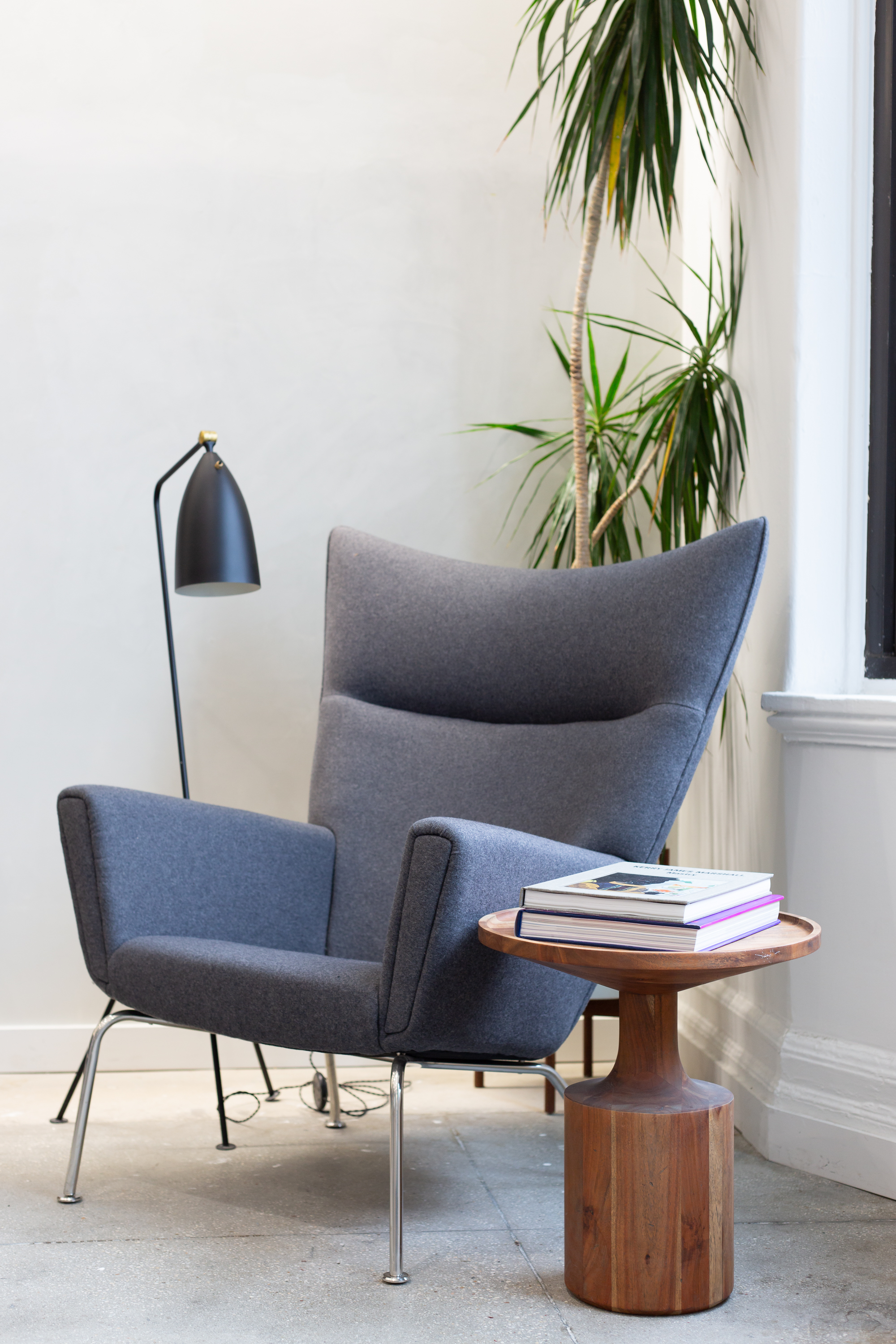
The Ketra Natural Light was interesting to me personally because of my interest in photography. On my DSLR I can set white balance using the Kelvin scale, which basically measures the temperature of the light. You know when you see a really crisp, clean photo? Or by contrast, a photo of a candlelit dinner that’s very warm and evocative…that’s partly because of the color temperature. I’m sure you guys understand this from Instagram too!
So when I’m doing photography what I try to do is match the WB setting in my camera to what’s present in the scene before me. The Kelvin scale goes from 1,000-10,000. 1,000-3,000 would be warm like candlelight or a sunset, while higher numbers would be cool and crisp like a blue sky. Average sunlight is around 6,000k. Your typical incandescent lightbulb is around 3,000k – quite warm. You can also change these color temperatures when you shoot in camera RAW, like I do. With this background knowledge from photography, it was really interesting to visit the Ketra showroom and watch them change the color temperature with the press of a button!
Another example: in the kitchen shot on the left the Ketra lights are set to around 3,000 (like candlelight), and the right, around 4,200 (neutral and matching to the light outside on that day). You can see how nice it would be to have that range available in your home.
Another interesting aspect of this kind of dynamic lighting system (aside from aesthetics) is the way that it makes you feel like your inside environment is closer to the outside environment. As someone who’s worked nights before for a brief period, I can tell you from experience how much interior lighting that’s out of sync with natural lighting can affect your mood and energy levels. I never felt very well during that period because I was sleeping during the day (missing out on natural sunlight), and in front of a computer screen and artificial lights at night (so bad). Dynamic lighting helps us experience a more natural environment indoors, which is why companies like Whole Foods and Google have adopted this type of lighting to improve the experience for their employees and visitors.
Other great things about the Ketra Natural Light system are that it works effortlessly – while you can control it yourself you can also set it to “natural cycle” and it will do the daylight cycle all on its own – you don’t even have to think about it. The light switch is also intuitive and looks like a regular light switch, which helps it to integrate seamlessly into the home – it even works with Amazon Alexa and Google Home. I’ve shown you how it cycles from cooler light (which is more blue), to warmer light like sunlight (more yellow), but since it can actually cycle through the full spectrum of light, you can also use Ketra to create special lighting effects in pastels or saturated colors. One company they told me about is a very well-known global creative agency that actually uses the colored lights to denote when conference rooms are in use – funny!
Overall, as a person who’s interested in photography and interior design, the whole experience of learning about Ketra’s Natural Light was really interesting! As I learned from the intense lack of sunlight in my previous apartment, natural light is one of the most important elements to how your space looks and, more importantly, how you feel in your space. I honestly can’t think of a better situation lighting-wise than having a system in place that mimics sunlight and blends seamlessly with what’s coming in through your window. To learn more, head on over to Ketra’s website!
Thank you so much to Ketra for sponsoring this post!
